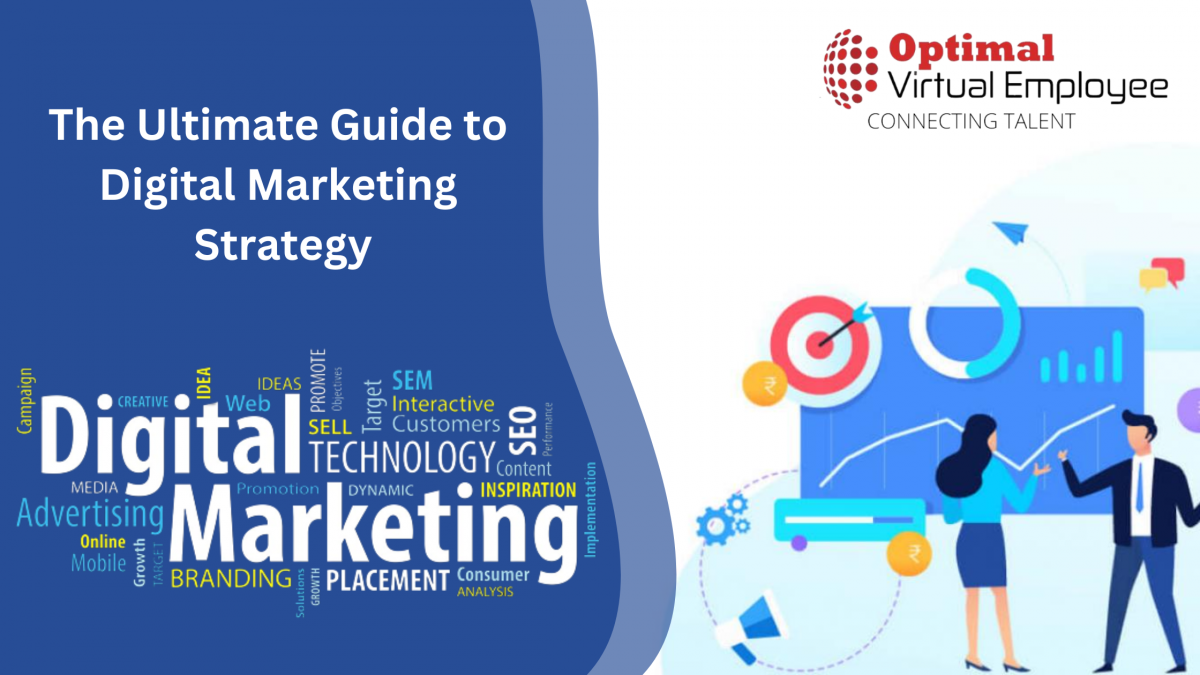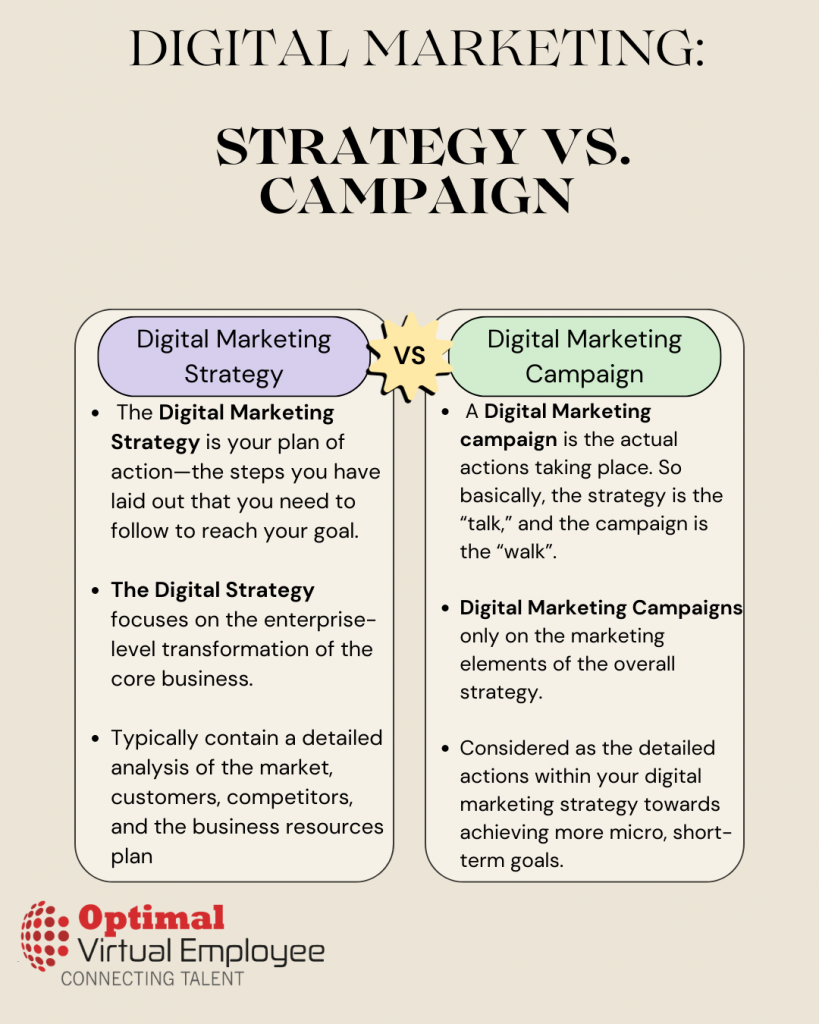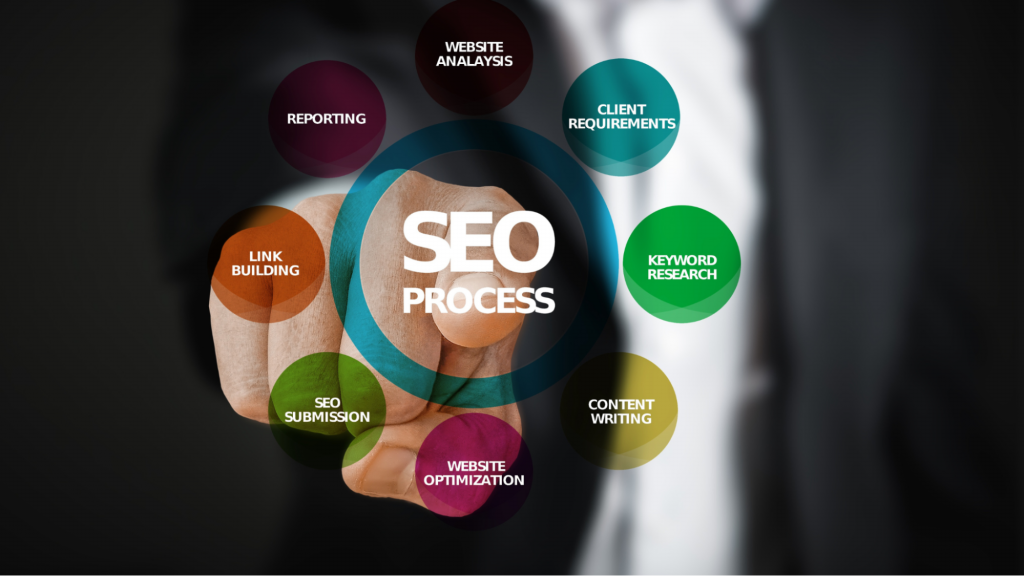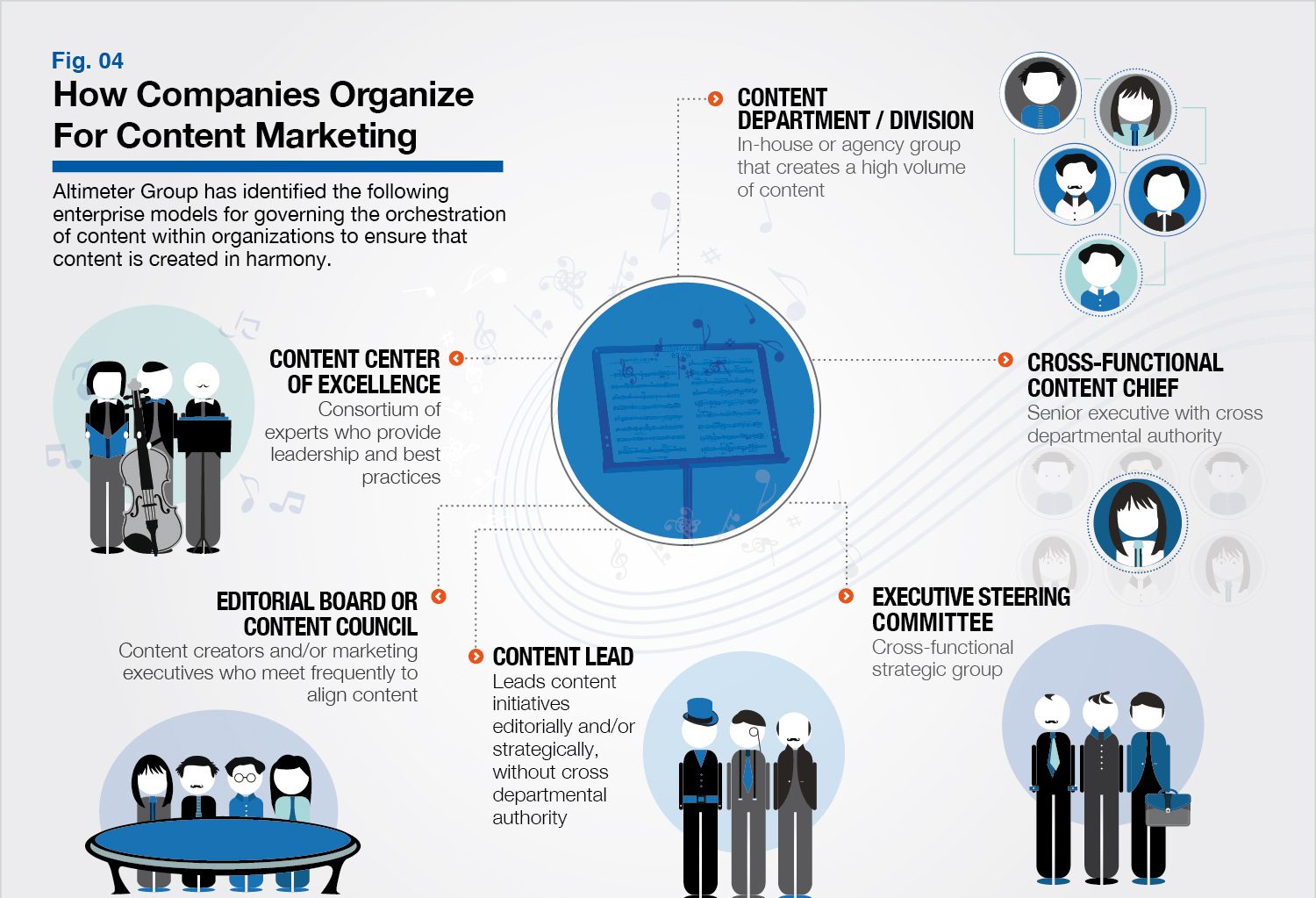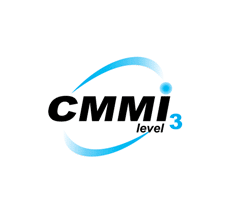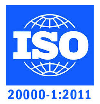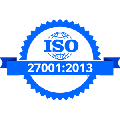Since marketing is no longer confined to traditional selling and advertising, technology and digital platforms dominate the new marketing model.
Modern marketing is more digital-focused, dynamic, interactive, and multi-channel. The role of digital marketing strategy is vital due to the significant impact the digital world has had on businesses’ marketing practices.
This post will provide an in-depth and comprehensive guide to digital marketing strategies.
What is Digital Marketing?
From social media marketing to email marketing to PPC advertising, digital marketing encompasses all online marketing efforts or assets.
Essentially, digital marketing involves connecting businesses with current and potential customers through the Internet and electronic devices.
Digital marketing has two primary terms:
- Digital Marketing Assets
- Digital Marketing Strategy
Definition Of Digital Marketing Assets
Organizations leverage their digital marketing assets online to reach an enormous customer base on the Internet.
An organization’s digital marketing assets create an online presence, so others can find you, connect with you, and do business with you.
Here are some examples:
- Brand assets: Logos, icons, acronyms, company websites, domain, and so forth
- Video content: Video ads, product demos, etc.
- Written content: Blog posts, eBooks, product descriptions, etc.
- Images: infographics, company photos, product shots, etc.
- Written content: Blog posts, eBooks, product descriptions, etc.
- Social media profiles: Facebook, Twitter, Instagram, Youtube, Reddit, etc.
- Online advertising accounts
They are just the iceberg’s surface (most common assets) and don’t represent every business’s assets.
Definition of Digital marketing strategy
Digital marketing strategies describe how to achieve marketing goals through online marketing channels. These channels include
- Owned: Any property owned and controlled by a business, such as blogs, websites, and social media accounts
- A paid marketing channel can be anything you pay for via a third-party platform. Some forms of paid media include display ads, commercials, and pay-per-click.
- The third type of media to look for is earned media. These mentions are voluntary, and you don’t have to pay for them like paid media.
Every successful marketing strategy relies on these 3 channels, especially in the digital space.
There are two primary components of an actionable digital marketing strategy:
- What online channels and digital marketing tactics are you planning to use;
- How much of your budget can be allocated to digital marketing?
In a nutshell, digital marketing is how you distribute your resources to the business’s digital assets.
Digital marketing: Strategy vs. Campaign
People use marketing strategies and campaigns interchangeably, but their applications and functionality differ.
Business strategies through online marketing fail due to this misconception between a digital marketing strategy and a campaign.
Digital marketing strategies include:
- As part of your business plan, describe how you will promote your digital marketing assets to achieve long-term or macro objectives.
- Establishing an actionable digital plan that uses appropriate online marketing channels to help the business achieve specific business and digital objectives
- Include a detailed analysis of the market, customers, competitors, and the business resources plan.
During a digital marketing campaign:
- Ensure that all business’s digital channels are used to execute the digital marketing strategy (specific tactics)
- Takes place after the business’s digital strategy has been developed
- Assists in achieving more micro, short-term goals within your digital marketing strategy
For example:
If your digital marketing strategy is aimed at generating more leads through both owned and paid channels, you may run a digital marketing campaign on Twitter and Facebook. You will create and share some of the best-performing rated content on 2 platforms to generate more leads.
Types Of Digital Marketing
There are as many types of digital marketing tactics as there are specializations within them. Here are a few examples.
-
Search Engine Optimization
The Balance defines SEO as “the art and science of making web pages attractive to search engines” rather than a form of marketing.
You must research and weigh different contributing factors to achieve the highest possible ranking on a search engine results page (SERP).
When optimizing a web page for search engines, the following elements are most important:
- Content quality
- Engagement level of users
- Mobile-friendly
- The number and quality of inbound links.
Aside from the elements above, you need to optimize your technical SEO, which includes your URL structure, loading times, and broken links. Improving your technical SEO can help search engines navigate and crawl your site better.
Using these factors strategically makes search engine optimization a science, but its unpredictability makes it an art.
Although there are many search engines, digital marketers often concentrate on Google because it is a market leader. Ultimately, the goal is to rank on the first page of a search engine’s result page. This ensures that those searching for a specific query related to your brand can easily find your products or services.
There is no quantifiable rubric or consistent rule for ranking highly on search engines. The algorithms of Google and other search engines are constantly changing, so it’s impossible to make exact predictions. However, you can closely monitor the performance of your page and adjust your strategy accordingly.
-
Content Marketing
The quality of your content is a critical component of an optimized page. As a result, SEO plays a significant role in content marketing, a strategy that distributes relevant, valuable content.
As with any marketing strategy, its goal is to attract leads that eventually convert into customers, but it does so differently from traditional advertising. Instead of enticing prospects with the potential value of a product or service, it offers value for free in the form of written materials, including:
- Blog posts
- E-books
- Newsletters
- Video or audio transcripts
- Whitepapers
- Infographics.
There are plenty of stats to prove the importance of content marketing:
- 84% of consumers expect companies to produce entertaining and helpful content experiences
- 62% of companies that have at least 5,000 employees make content daily
- 92% of marketers believe that their company values content as an essential asset
Even though content marketing is effective, it can be challenging. Writers who write content marketing must be able to rank highly in search engine results while also engaging people who will read, share, and interact further with their content. Relationships can be built throughout the pipeline when the content is relevant.
Who are you ultimately trying to reach with your content marketing efforts? Identifying your audience is the first step to creating highly relevant, engaging content. Once you better understand your audience, you can determine the type of content you’ll make. Several formats can be used in your content marketing, including videos, blog posts, worksheets, and more.
The best practice in content marketing is to make content grammatically correct, error-free, easy to understand, relevant, and engaging, no matter what type of content you create. In addition, your content should lead readers to an online signup page or a free consultation with a sales representative.
-
Social Media Marketing
With billions of people engaging on social media platforms, marketing can be a worthwhile investment. It involves engaging people in discussion online to drive traffic and brand awareness. By focusing on social media marketing, you can highlight your brand, products, services, culture, and more.
The most popular digital sites for social media promotion are Facebook, Twitter, and Instagram, followed by LinkedIn and YouTube. Your selection of which one to use hinges on your objectives and target market. Say you want to generate more leads for a FinTech firm; LinkedIn is a good option, given that it is where many industry professionals congregate. If you’re in the B2C sector targeting younger customers, opting to run social media ads on Instagram can be more beneficial for your company.
In the B2C sphere, social media marketing is the most popular content medium at 96%, and it is gaining ground in the B2B sphere as well because it involves active audience participation. According to the Content Marketing Institute, 61% of B2B content marketers have increased their use of social media.
Knowing how well you reach your audience through social media marketing is beneficial because it comes with built-in engagement metrics. The interactions that matter most to you are your website’s number of likes, comments, or total clicks.
Brands often use social media marketing to engage audiences rather than encourage them to buy immediately. Direct purchase may not even be a goal of your social media marketing strategy. It is ubiquitous for older audiences and companies that offer products and services that aren’t suitable for impulse purchases. It all depends on the company’s social media marketing goals.
To create an effective social media marketing strategy, it’s crucial to follow best practices. Here are a few of the most important social media marketing best practices:
- Create engaging and high-quality content
- Respond to comments and questions in a professional manner
- Establish a schedule for social media postings
- The right time to post
- To support your marketing efforts, hire social media managers
- Identify your audience’s most active social media channels
-
Pay-Per-Click Marketing
When someone clicks on your digital ads, you pay a fee. PPC is a form of digital marketing. In other words, instead of paying a set amount to run targeted ads on online channels constantly, you only pay for the ads that people interact with. How and when people see your ads is a bit more complicated.
A common form of PPC is search engine advertising, and because Google is a leading search engine, many businesses use Google Adwords for this purpose. A vacant spot is filled with an instant auction on a search engine results page, also known as the SERP. An algorithm prioritizes each available ad based on a variety of factors, including:
- Ad Quality
- Keyword relevance
- Landing page quality,
- Bid Amount.
When a person searches for a specific query, PPC ads appear at the top of search engine results pages based on the factors above.
As a result of clicking an ad, viewers are supposed to take one or more target actions. Conversions are actions that can be transactional or non-transactional. For example, a purchase is a conversion, as is signing up for a newsletter or calling your home office.
Using your chosen digital marketing channels, you can track whatever conversions you choose as your campaign goals.
-
Affiliate Marketing
Using affiliate marketing, you can earn money by promoting another business. You can be either the promoter or the company that works with the promoter.
If you’re an affiliate, you get a commission every time someone purchases the item you promote. If you’re a merchant, you pay the affiliate for each sale they help you generate.
Affiliate marketers may review only one company’s products on a blog or third-party site. They may have relationships with multiple merchants.
To become an affiliate or find one, the first step is to connect with the other party. You can use digital channels to connect affiliates with retailers or create a single-retailer affiliate program.
It is possible to make your affiliate program appealing to potential promoters if you are a retailer working directly with affiliates. You will need to provide your affiliates with the tools they need to succeed, including incentives for great results, marketing tools, and premade materials.
-
Native Advertising
Native advertising blends in with its surrounding content, making it less evident as advertising.
Due to the cynicism of today’s consumers, native advertising was developed to address this problem. Because ad creators pay to run an ad, many consumers assume it is biased.
The native ad overcomes this bias by offering information or entertainment before it gets promotional, minimizing the “ad” element.
Make sure you clearly label your native ads. For instance, use words such as “promoted” or “sponsored.” If these indicators are hidden, readers will spend considerable time engaging with the content before realizing it’s advertising.
If you tell your consumers precisely what they’re getting, they’ll feel more confident about your content and brand. Native ads are meant to be less intrusive than traditional ads.
-
Influencer Marketing
Influencer marketing, similar to affiliate marketing, involves working with influencers with a large following, such as celebrities, industry experts, or content creators, in exchange for exposure. Social media influencers will often endorse your products or services to their followers.
B2B and B2C companies that want to reach new audiences can benefit from influencer marketing. However, it’s essential to partner with reputable influencers since they are essentially representing your brand. An influencer who tarnishes your brand can damage consumer trust.
-
Marketing automation
By automating your digital marketing campaigns, you can focus on creating the strategy behind your digital marketing efforts rather than cumbersome and time-consuming processes.
Marketing automation may seem like a luxury your business can do without, but it can significantly improve audience engagement.
According to statistics:
- 81% of consumers would like the brands they engage with to understand them better
- 77% of companies believe in the value of real-time personalization, yet 60% struggle with it
The use of marketing automation allows brands to meet consumers’ expectations of personalization.
- Collect and analyze consumer data
- Develop marketing campaigns that are targeted
- Post-digital marketing messages at the correct times to the right audiences
Many marketing automation tools determine the next step by prospect engagement (or lack thereof) with a particular message. With this level of real-time customization, you can create an individualized marketing strategy for each customer without investing extra time.
-
Email Marketing
Sending a promotional message and hoping your prospect clicks on it is the basic concept of email marketing. But the execution is much more complicated. To begin with, you must make sure your emails are wanted. To do this, you must have an opt-in list that:
- Individualizes the content in both the body and the subject
- Indicates clearly what kind of emails the subscriber will receive
- A clear unsubscribe option in the email signature
- Integrates transactional and promotional emails
Your prospects should see your campaign as more than just a promotional tool.
89% of surveyed professionals named email marketing their most effective lead generation technique.
Incorporate other digital marketing techniques, such as marketing automation, which lets you segment and schedule your emails to meet your customers’ needs.
Here are a few tips to help you craft great email marketing campaigns if you’re considering it:
-
Mobile Marketing
With mobile marketing, you can engage your target audience via SMS and MMS messages, social media notifications, mobile app alerts, and more on their mobile devices.
You should continually optimize your content for mobile devices. According to the Pew Research Center, 85% of Americans own a smartphone, so creating content for computers and mobile devices is crucial.
4 Pillars Of A Digital Marketing Strategy
During the past few decades, digital marketing and the Internet have evolved into specialized forms of marketing, such as content marketing and social media marketing.
Adapting to the competitive landscape requires digital marketers to understand the top 4 pillars of digital marketing.
To gain traction with a business’s online goals, it is necessary to have all four legs of digital marketing.
-
Content Marketing
Due to the Internet, people are bombarded with more advertisements and messages than ever. This results in serious difficulty focusing. Or worse, it weakens the impact of businesses’ digital channels.
Content marketing is publishing useful blogs, social media posts, and e-newsletters to attract organic traffic to your website.
Social media or Google advertising is worthless if your content is just a copy of someone else’s.
-
Communications
Providing a conduit for your message or content is critical to any digital marketing strategy.
Digital messages can be distributed in three ways:
- One-to-Many Communications: Messages are delivered in one direction, from the business to the mass audience (for example, through traditional advertising).
- One-to-One Communications: The information will be delivered from the business (one person) to a targeted individual (via email marketing or the Inbox feature on Instagram or Facebook).
- Many-to-Many Communications: Communication between many parties in an open system is called many-to-many communication.
Communication type depends on your business’s goal, market data, and targeted customer data. It also affects:
- How you design your message for maximum efficiency (personal or broad)
- Distributing the business’s messages within your budget and communication channels.
In contrast to One-to-One Communication, One-to-Many Communication targets a much larger number of people, so the message must be more general and broad.
-
Community
For a successful digital marketing strategy, the community is one of the 3 most vital pillars after defining the communication type and message.
Businesses can easily connect and engage with their prospects in the digital age through social media platforms. In addition, social media allows brands to create and grow their communities.
Facebook, Twitter, and Instagram are excellent opportunities for businesses to promote themselves where their customers spend most of their time.
-
Digital Advertising
It covers the bases that your website and content marketing cannot reach. Paid advertising is the final leg of your digital marketing strategy.
Advertising is essential to extending the reach of the digital message.
Keyword research is usually the first step in planning an effective digital advertising campaign.
After determining which keywords to target, it’s time to set up the ads to spend. Ads typically make up the bulk of a business’s digital marketing budget.
You can easily optimize and reduce digital marketing costs by making the right decisions on content, communication types, digital channels, and keywords.
Why Does Digital Marketing Strategy Matter To Your Business?
The definition of digital marketing strategy tells us that a business is directionless without a digital marketing strategy.
- Understand the online marketplace, the business’s positioning, and competitors better.
- By understanding what works best for the type of products and services offered and the targeted customers, choose the right platforms to advertise the business.
The purpose of digital marketing strategies is to help companies achieve their channel leads & sales targets (such as increasing brand awareness or generating leads from a website).
A well-planned and written digital marketing strategy will give you a clear picture of the steps you need to take to reach your final goals (the direction and focus).
- Support and implement the business’s digital activities seamlessly by ensuring everyone on the team is on board.
- Establish a budget for the entire digital marketing strategy, and reduce the possibility of unnecessary exorbitant expenses.
- Implementation should minimize duplication and waste.
- Enhance your competitiveness by benchmarking your activity against other competitors.
Critical Elements Of A Digital Marketing Strategy
Digital marketing strategies should include the following components:
- Define your brand’s core value using brand guidelines – One of the first steps in developing a strategy is to identify your company’s unique selling points (USPs).
- Create customer personas with specific segmentation (including demographics, interests, habits, etc.). Understand what motivates them to take online actions (purchase, interact, comment, etc.).
- SMART goals stand for Specific, Measurable, Achievable, Relevant, and Time-bound. Each contributes to a clear, well-defined, and achievable goal.
- Use market research tools (Google Keyword Planner, Google Trends, and Facebook Audience Insights) to determine the potential level of target markets.
- Analyze the competition using major web and social analytics tools (Similarweb, Semrush, and SocialBakers).
- SWOT analysis stands for Strengths, Weaknesses, Opportunities, and Threats. It helps you develop your strategy more effectively.
- To achieve objectives effectively, allocate resources to in-house marketing or outsource to external marketing agencies.
- Use digital marketing analytics tools to track and measure digital marketing effectiveness for further optimization.
How To Develop A Digital Marketing Strategy [A Step-By-Step Guide]
Step 1: Define your brand identity
Businesses need a strong brand identity to develop customer loyalty, customer retention, and long-term competitiveness.
A business must establish a brand identity to differentiate itself from its competitors and be positioned appropriately.
Coca-Cola is well-known when it comes to fizzy drinks or carbonated beverages. Or their red color is distinctive and prominent.
As a marketing strategy’s backbone, branding focuses on maintaining a consistent and clear brand across all digital channels and is the central premise for all subsequent digital marketing campaigns.
Here are some things you should do:
- Develop a visual brand for the digital marketing strategy to make sense of unity and cohesiveness. Consider your unique selling points (USPs), brand voice, and value proposition.
- Highlight the key points of your brand characteristics when creating future actionable plans and campaigns.
Therefore, all subsequent actions should reflect your brand’s characteristics (logo, color patterns, tone of voice, etc.).
Step 2: Define your audience and buyer personas for the digital strategy.
Until now, digital marketers have utilized technology to gather qualitative and quantitative data about their target audiences (such as demographics, interests, and behavior).
“Buyer personas” elevate the essence of this step to a whole new level. They are an essential component of most effective marketing strategies.
It is a fictional character who describes all of the characteristics of a business’s best potential customers. This step requires a lot of research upfront since it impacts the digital marketing strategy.
How should you proceed?
- Find out if your market is new, oversaturated, niche, or mainstream. Next, figure out the giants and minor players in your market, the market potential, and the financial upside.
- Who are your targeted customers? – Our advice is to focus on a specific niche and describe your targeted group in as much detail as possible
- By identifying the platforms where targeted groups spend most of their time in the digital world, you can quickly determine the best digital channels and messages to the target.
- You also need to learn more about your target audience’s consumption habits across multiple channels. For instance, your customers may spend hours on Reddit but usually purchase on Facebook.
Here are some questions related to the shopping behavior of the targeted group:
- Reason for purchase actions: For more in-depth research, you need to determine the main reasons customers make purchase decisions. Research the reviews of similar products on popular eCommerce sites. Remember, you’re looking for customers’ mutual needs and expectations, not their viewpoints.
- If you know where and how customers are buying, you can adjust your marketing strategy around expectations and persuade them to take the actions you desire.
- Make a list of the concerns expressed in competitor reviews or feedback on significant eCommerce sites about similar products of yours (customers’ complaints, unresolved issues).
When you show your potential customers that you care about their pain or need, they’ll be more likely to explore what you offer.
Step 3: Establish SMART goals and objectives.
You must define specific goals and objectives as part of the digital marketing strategy. These can include, for example:
- Build brand recognition
- Generate more leads
- Get more sales via the website
- Gain more email subscribers or followers on social media accounts.
You might end up with unwanted results and marketing waste costs if you set a plan without knowing the final goal and objective behind this action.
To develop a highly effective and actionable digital marketing strategy, you should take your goals as specific as possible. You can use the SMART framework to create them.
- Specific
- Measurable
- Attainable
- Relevant
- Time
As an example:
SMART method objectives: Get 50.000 visitors to the website by X (month) and Y (year) using social media advertising and email marketing. The objective without the SMART method is to increase traffic to the website. All your actions within the strategy and further plan must work towards achieving these objectives.
Step 4: Evaluate and select Digital Marketing assets.
To choose suitable digital assets for your digital marketing strategy, follow these steps:
- The first step is to list all the digital marketing assets you currently use
- Next, evaluate the performance of each asset in the previous year. Get rid of those that didn’t perform well.
- Identify the channels or assets that are most effective by now and that fit the predetermined marketing goals and objectives.
Don’t hesitate to use it again when you create a landing page that is effective in lead generation and your targeted marketing goal is to get more leads.
Determine which marketing channels you should use for each part of your strategy based on your buyer data.
Step 5: Choose digital marketing strategies and tactics.
Having defined your SMART objectives (attraction, conversion, lead, and loyalty), you already have the building blocks to develop a digital marketing strategy.
Considering top digital marketing trends can help you develop a more strategic approach to digital marketing.
You can focus on the following digital marketing strategies:
- Content marketing
- Email marketing
- SEM (Search engine marketing)
- SEO (Search engine optimization)
- PPC (Pay-per-click)
- Social media marketing
- Influencer/ Affiliate marketing
- Viral marketing
- Advertising
- Mobile Digital Marketing
Step 6: Optimize your digital strategy for mobile usage
The number of smartphone users worldwide is expected to grow to 3.8 billion by 2021, according to Statista.
There’s no excuse for not taking mobile optimization seriously within our digital marketing strategy in today’s mobile-first world. Smartphones now account for a significant portion of online traffic.
The following criteria will be used to evaluate mobile optimization:
- The loading speed of your website
- Design and display of the website, email content, posters, and brand photos on users’ mobile devices
- Mobile optimization refers to adjusting a business’s web content to ensure visitors who come to your site have an experience customized to their devices. Still, this concept is expanded when we talk about digital marketing.
Therefore, mobile optimization isn’t just about optimizing web content but other content across a company’s digital channels.
- Visual email content
- Digital posters or videos
- All your digital ads
- Images for posts on social media channels and so forth
When a mobile user gets to your sales funnel, they should have a flawless user experience, resulting in more accessible conversions.
Step 7: Incorporate Automate Marketing and Personalization.
When you put your campaign into action, you’ll want it to be as impactful and effective as possible.
Typically, there are 2 possible ways you can do this:
1. Personalization
2. Automation
For higher performance, these 2 can even overlap in many cases.
Businesses can automate content marketing, email marketing, lead generation, and more using marketing automation platforms.
With the advancement of technology, they can even be integrated with your company’s sales CRM, improving the whole sales process.
As with automation, personalized marketing helps you to create an experience tailored to individual users. In other words, you will show users different landing pages, ads, messages, and emails based on their specific actions, such as:
- Advertisements that retarget users by marketing to the products they’ve viewed on your website
- Send triggered email autoresponders to show customers similar products to what they’ve seen in the past.
You can enhance your strategy by adding personalization, audience segmentation, and automation. As a strategic planner, you should ensure your current marketing technology platform can handle all the data, segmentation, and automation that effective personalized campaigns require.
Step 9: Set KPIs for your strategy
Marketers use KPIs (Key Performance Indicators) to measure and track their performance towards predetermined marketing goals.
A few of the top KPIs that are data-driven for modern digital marketing:
- Conversion/ churn/ attrition rates
- Cost per conversion/ lead
- Conversion rate per keyword
- Click-through-rate (CTR)
- Unique visitors per day/month
- Pages per visit
- New leads per day/month
- Marketing qualified leads (MQLs)
A specific digital marketing KPI makes it easier for marketing teams to determine targets and measure and track the campaign’s performance throughout.
Step 10: Track your process and optimization.
It’s great when you already have a comprehensive and prominent digital marketing strategy, but the work doesn’t stop there.
The KPIs you set in the previous step makes it incredibly easy to capture, report, and analyze all the relevant data.
You can correct things that don’t work to achieve your objectives by tracking and measuring your digital strategy’s effectiveness.
Here are a few good rules of thumb you can follow to track each KPI:
- Weekly tracking: Apply for extreme vital metrics that change week-to-week in response to the market situation
- Monthly tracking: Apply to see a percent growth month-over-month and to modify the monthly strategy for optimization
- Quarterly tracking: Apply when you want to know whether your strategy is working after a few months
Digital Marketing Strategy Example
Below we will discuss some examples of how businesses implement their digital marketing strategy in practice:
- Social media marketing strategy
- Email marketing strategy
Promo.com is a cloud-based service that allows users to create stunningly beautiful and professional videos from stock photos, clips, and music.
To build their social media profiles, Promo.com made them on all the most popular social media platforms:
- Facebook (~ 184.000 followers)
- Youtube (~4.800 subscribers)
- Instagram (~101.000 followers)
- Twitter (~191.000 followers)
- LinkedIn (~ 8,682 followers)
- Pinterest (~67 followers)
Promo.com’s social media strategy is to extend its online presence as much as possible via social media. They did well on Facebook, Youtube, Instagram, and Twitter, as evidenced by their massive following.
Promo.com’s social presence is impressive for two main reasons:
- Promo.com understands their target audience – Businesses and agencies.
- Define the brand’s value proposition and brand personality from the start. Importantly, capture them in their posts, primarily via creative video form.
- Set a clear function for each platform.
Facebook and Instagram post mostly short videos of exciting news and share updated blog posts from the official website to generate traffic.
The YouTube channel, meanwhile, features educational content related to Promo.com’s standout features (tutorials).
Email media marketing strategy: Crello
This online tool allows users to easily create videos and graphic designs for social media, prints, or web-based graphics.
Due to its personalization and flexibility, email marketing is always a favorite tool of digital marketers.
It’s challenging to communicate with your whole audience simultaneously with automation. The secret to Crello lies in two factors: Personalization and Segmentation.
To put it another way:
- The brand should offer its subscribers dozens of newsletters with personalized content, such as new templates (weekly), design tips, promotions, and local event information.
- Include CTA buttons on most emails that allow subscribers to select their adventure and desired templates. This will enable Crello to understand customer interests and segment them accordingly.
- A proper email frequency (or email cadence) is around 2-3 bulk emails a week.
- Deliver great visual emails instead of boring ones—a “no better” way to communicate the brand’s value proposition.
How Do the Different Digital Channels Impact the Business?
Regardless of which digital marketing channel you decide to use, it is essential to analyze digital marketing analytics reports to identify which digital channels return the highest investment to allocate the proper budgets.
It is also typical for digital marketing campaigns to integrate multiple digital marketing channels (multi-channel), such as search engine marketing, content marketing, display advertising, and email marketing.
You shouldn’t confuse this with omnichannel, which involves engaging customers through multiple and multi-channel channels. The term omnichannel refers to a consistent, unified, and seamless customer experience, regardless of whether the customer interacts with the brand on social media, in the store, or online.
Customer loyalty programs that tailor product recommendations based on online and offline customer purchase history are examples of omnichannel strategies, such as physical brochures with QR codes.
To maximize target market reach and lead nurturing, digital marketing should be integrated with offline marketing channels, such as print advertisements, live industry events, popup booths, and in-store promotions.
An example of an online/offline marketing integration would be launching a trade show (offline) and establishing a Facebook Advertising campaign (online) to promote the offline event. In addition, we collect lead information during the event (offline), so we can follow up via email and mobile marketing (online).
Businesses can engage their audiences at various touchpoints by providing an omnichannel customer experience throughout the user journey, from awareness to post-purchase.
For instance, businesses can launch online PR campaigns to create awareness, implement content marketing to help customers evaluate their products, drive high purchase intent traffic to their website through SEO, digital ads, and email, and nurture leads to repurchase using Email Marketing, Digital Advertising, Marketing Automation, and Social Media Marketing.
The selection of digital marketing channels depends on various factors, such as:
- Marketing objectives: Are your goals to increase brand awareness or encourage purchases?
- Marketing Budget: Do you have sufficient budget to span your marketing campaigns across multiple digital channels?
- Manpower: Does your marketing team have the knowledge and skills to manage various campaigns and digital agencies?
- Customers: Which platforms are your customers on? What are your customer touchpoints?
Conclusion
There are many opportunities for businesses to increase through digital marketing. However, you must decide whether to grab and take advantage of them. This post aims to give you an overview of a complete digital marketing strategy and help you develop your unique one.
